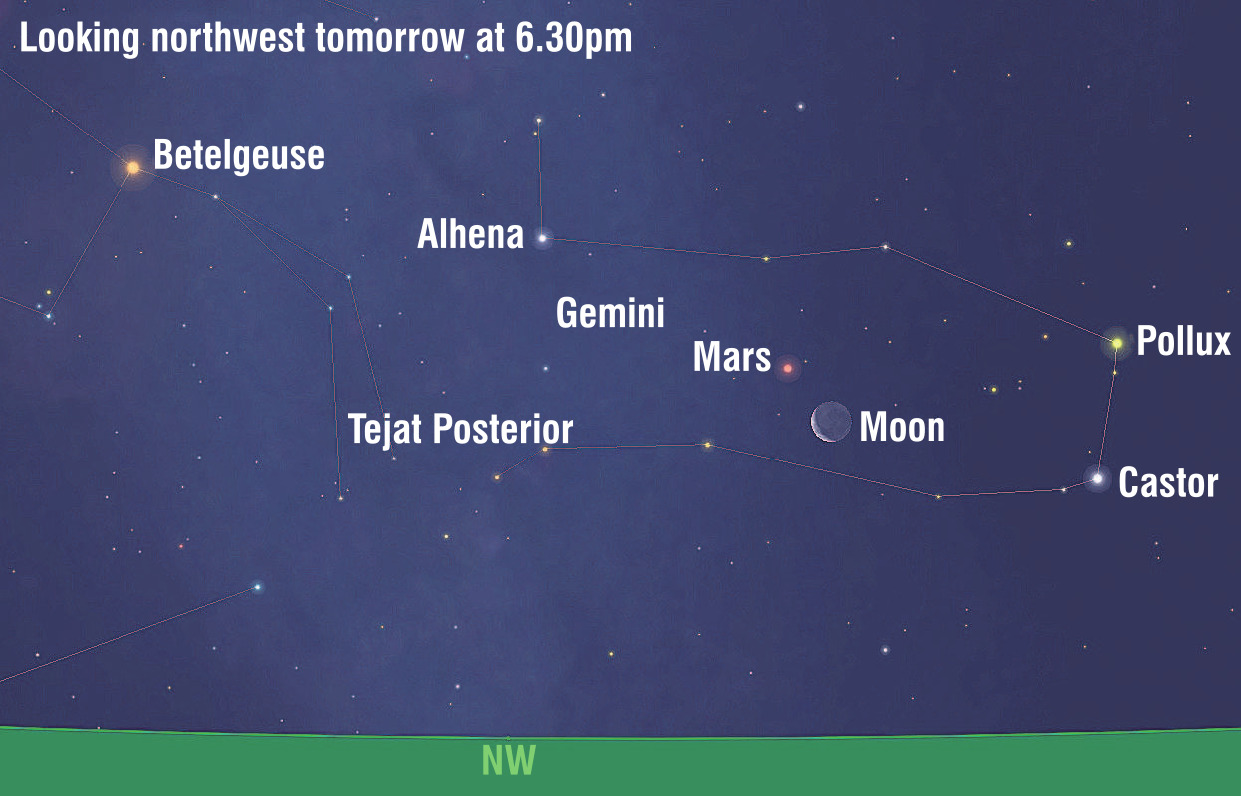
If you want to spot Mars for yourself, you need to go out as soon as it gets dark and look in the northwestern sky. The planet can be seen as a relatively bright orange, red "star" setting just after 8pm. Tomorrow you can use the moon as a helpful guide to find Mars. The 4-day old waxing crescent of our closest celestial neighbour will be two degrees below and to the right of the red planet.
If you have a telescope, point it towards Mars. You will see that the planet exhibits a tiny disc resembling a 95% illuminated gibbous moon. The planet’s apparent size has decreased considerably over the past few months. When Mars was closest to us last year, its disc was more than five times larger than it is now.
To my mind, one of the most incredible things about the Perseverance mission is the fact we see images transmitted over an enormous distance. This week, for example, Mars is just over 320million kilometres away. The data from Perseverance, travelling at the speed of light takes more than 17 minutes to cross the interplanetary void between Earth and Mars.
Both the moon and Mars will be located in the constellation Gemini, "The Twins". This constellation is almost a perfect rectangle bounded by Castor and Pollux’s bright stars at one end and the dimmer stars Alhena and Tejat Posterior at the other. Gemini is one of the 12 constellations of the Zodiac. According to legend, Castor and Pollux were the protectors of the ship Argo on its journey to recover the golden fleece.
- Ian Griffin











